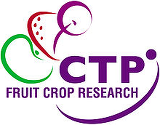RefERENCE: CTP_FCR_2021_13
Supervisors: Prof Tracy Lawson (University of Essex), Dr Andrew Simkin (NIAB EMR), Dr Mark Else (NIAB EMR)
This student will be registered with the University of Essex. Available immediately, the successful candidate should have (or expect to have) an Honours Degree (or equivalent) at 2.1 or above in Plant Biology, Plant Physiology or Molecular Biology.
Background
Globally, water usage has increased 6-fold in the past 100 years, twice as fast as the human population, and is forecast to double again before 2030, driven mainly by irrigation and agriculture. In the UK alone, the volume of irrigation water has risen 10-fold in the past 30 years and this trend is set to continue. Additionally, global temperature is predicted to rise by an average 2.7oC by the end of the 21st century, resulting in increased leaf/canopy temperature and a greater need for evaporative cooling. Stomatal transpiration is central to the expected crisis in water availability and crop production. Since stomatal behaviour influences photosynthesis, water use and leaf temperature, guard cells are an unexploited but important target for study to (i) improve plant water use under conditions of water shortage or (ii) adjust evaporative cooling to optimise leaf temperatures under heat stress where water availability is not limited. Stomata open in response to increasing photosynthetically active radiation (PAR). However, guard cells also exhibit a specific “blue” light response that increases stomatal conductance (gs) at intensities of blue light too low (15 μmol m-2 s-1) to drive net photosynthesis. Preliminary data obtained as part of a Berry Gardens funded pump-priming project suggested that blue light pre-treatment during the establishment phase could result in increased rates of photosynthesis later in the season.
Objectives and approaches
This project aims to test the potential of using a higher proportion of blue light during the plant establishment phase to increase photosynthetic performance per unit leaf area and to investigate the effects of blue light treatment on stomatal conductance, water use efficiency, leaf chlorophyll content, chlorophyll a/b ratio, and stomatal density. Furthermore, we will explore genetic manipulation of the blue light stomatal signalling pathway to further understand the potential to increase productivity. Together these approaches will allow us to determine whether blue light leads to higher marketable yields and improved fruit quality. This project will lead to a better understanding of the genetic basis of optimal stomatal dynamics and to facilitate molecular breeding approaches. This will allow smart design of new crop varieties with improved stomatal conductance, canopy temperature, photosynthesis, water use, and ultimately, yield and quality.
Training
The studentship will provide advanced training in crop molecular physiology, photosynthetic adaptation, gene editing, assessments of fruit quality, growth analysis and use of IRGAs and chlorophyll fluorescence as well as experimental design and statistical analysis. You will work in a supportive group composed of molecular biologists, biochemists and plant physiologists.
Application
Anyone interested should fill the online application form before the deadline of 15th March 2021. If need further help or clarification, please contact recruitmentctp@emr.ac.uk.
Contact Professor Tracy Lawson (tlawson@essex.ac.uk) or Dr Mark Else (mark.else@emr.ac.uk) for an informal discussion.
